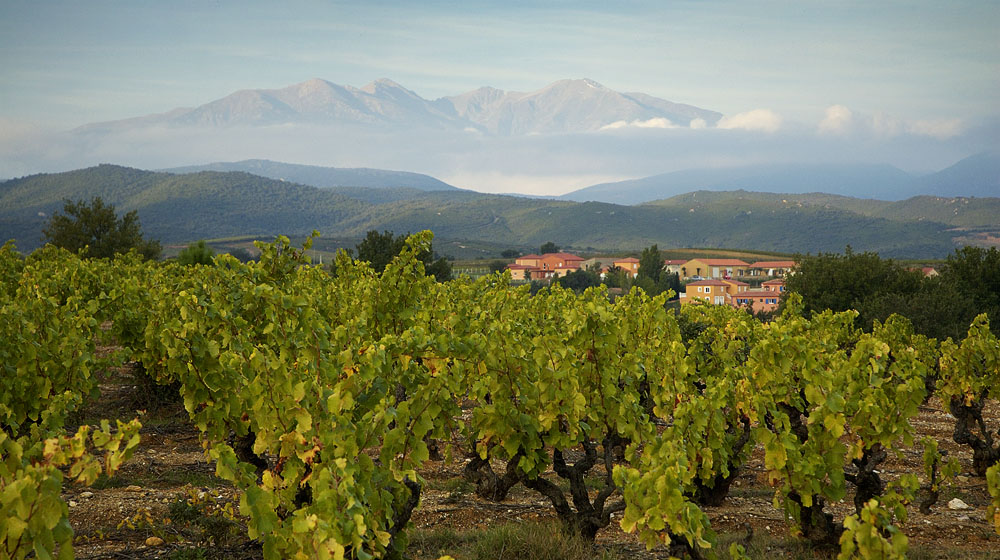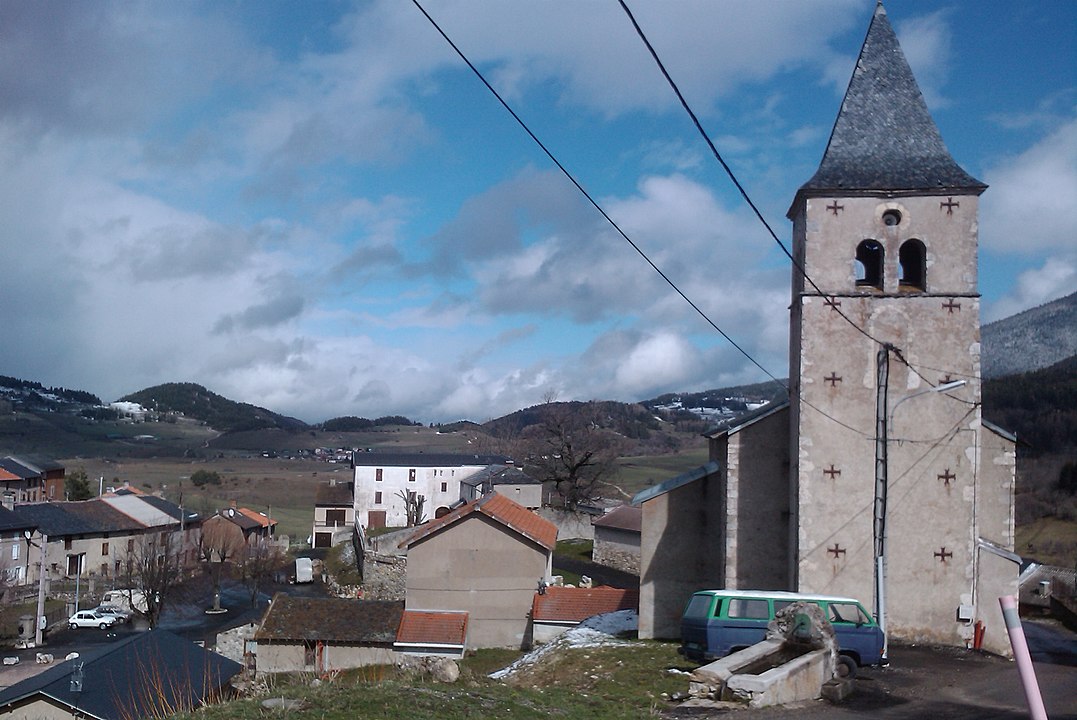How Emmanuel Le Roy Ladurie's Accounts of Europe’s Peoples Broke New Ground in History Writing
Emmanuel Le Roy Ladurie, who died on November 22, 2023, was a part of the Annales school or group of historians. But in some ways, especially in his later writings, he stepped outside the trend of history writing that the historians of the Annales school had established.
The school derived its name from the journal Annales: economies, societes, civilisations started by two outstanding French historians, Marc Bloch (1886-1944, shot by the Nazis for being part of the French Resistance) and Lucien Febvre (1878-1956).
The purpose of the journal, as its name suggests, was to attempt to portray a kind of “total history” which would encompass all the facets of human life. As Bloch wrote in The Historian’s Craft, “wherever he [the historian] catches the scent of human flesh, there his quarry lies.”
The other feature was to look at history over a long period, not through episodic bursts – the longue durée as it was called.
Bloch tried to capture this in his masterpiece Feudal Society (English translation 1961, written in French probably in the closing years of the 1930s, before Bloch went underground to work for the Resistance), which looked at the evolution and structure of feudal society over a span of nearly four centuries.
The question that Bloch posed was the following (in his own words): “What are the distinctive features of this portion of the past which have given it a claim to be treated in isolation? In other words, what we are attempting here is to analyse and explain a social structure and its unifying principles.”
He was thus not concerned with the actions of kings, princes, knights and so on but was trying to venture into a form of history writing that was based on the “observation of social phenomena.”
Bloch and his followers in the Annales school were thus not undermining empiricism (note the use of the word “observation”), which was the staple of history writing in Germany and Britain. Rather, he was shifting the object of observation from “politics” to society (in the broadest sense of the word).
One consequence of this was the marginalisation of the individual – Bloch did not look at the action of any one individual, however important and pre-eminent.
Human beings were not absent from his analysis: they were present, very much present, but as an anonymous collective. Bloch even delved into the modes of thought and feeling: this later came to be dubbed as the history of mentalité.
In the works of French historian Fernand Braudel, the disappearance of the individual was almost complete. Individuals had no agency; they were the products of the historical circumstances in which they found themselves. The historians’ job was to explain those circumstances.
He was to write famously in his magnum opus, The Mediterranean and the Mediterranean World in the Age of Philip II, “When I think of the individual I am always inclined to see him imprisoned within a destiny in which he himself has little hand.”
Braudel was, in a different way, echoing and with greater emphasis the views of Marx as articulated in that famous opening paragraph of The 18th Brumaire of Louis Bonaparte: “Men make their own history but they do not make it just as they please. The dead hand of the past hangs over their present activities.”
The issue that Braudel and Marx were raising is the one of human agency, or rather, the absence of it.
Ladurie’s early work, especially Times of Feast, Times of Famine: A History of Climate Since the Year 1000 (first published in English in 1971 but in French in 1967), was an example of history not only in the longue durée but also history bereft human choice and agency.
The book that made Ladurie well known was The Peasants of Languedoc. This was his doctoral dissertation, which was published in France in 1966 and then translated into English in 1974.
Ladurie looked at the history of agriculture over three centuries through the prism of quantitative data – levels of productivity, wages, rents, profits and so on. He arrived at the conclusion that for the peasants of Languedoc, nothing had changed over 300 years; they were so rooted in their own culture and practices that they were averse to innovation and change. Agrarian life in Languedoc, Ladurie argued, had remained frozen and immobile.

Ladurie went on to say that the the rural world of Languedoc “had not yet suffered the attacks of rationalism; it still had a taste for the magical and the marvellous.” Photo: Mick Stephenson/Wikimedia Commons. CC BY SA 3.0 Unported.
This phenomenon of immobility seems to have been a pre-modern French predicament. Emma Rothschild in her book An Infinite History notes that Balzac in his novels, written in the 19th century, described the society of Angoulême (a small town in south west France) as being marked by “the most fatal immobility”.
Through his emphasis on the absence of change, Ladurie was also going against one of the prevailing ideas of Marxist historiography, i.e., that agrarian change was producing a land market, higher rents and profits and the dispossession of peasants – the process of primitive accumulation as Marx called it in Capital volume 1 – and thus paving the way for the emergence of capitalism.
Such a process may have occurred in England but certainly not in Languedoc, shackled as the peasants of the region were to the absence of change. Economic change and the absence of it could not always be analysed in terms of economic factors: culture had a vital role and that culture needed to be understood.
Ladurie had thus turned the then-prevalent Marxist base-superstructure analogy on its head. Much as Marx had turned Hegel on his head.
Ladurie returned to Languedoc in Love, Death and Money in the Pays d’Oc (first published in French 1980, English translation in 1982). This time he looked at culture, emotions, folklore – aspects of social life that historians often ignored.
In this book, Ladurie took a novel, Jean-L'Ont-Pris by Jean Baptiste Castor Fabre (1727-83), which was considered a masterpiece and as a realistic depiction of rural life in 18th century Languedoc, and contrasted this with the culture of the region in the ancien régime.
He considered the novel “in terms of folk literature … [to] get a clearer idea of the extent to which Jean-L'Ont-Pris is a realistic description of village life.” He was thus looking at “the thick file concerning the relations between literature and history, fiction and fact.”
Ladurie’s analysis emphasised that the mentality of the rural world of Languedoc “had not yet suffered the attacks of rationalism; it still had a taste for the magical and the marvellous.” He revealed what he called “the infraculture of the Enlightenment: a ground floor, occupied by the dialect writers of the provinces; and a basement, crossed, as if by cables, by the oral networks of folk-tale transmission.”
Ladurie’s Montaillou: Cathars and Catholics in a French Village, 1494-1324 (published in French in 1978; English translation the same year) became a bestseller. This popularity is somewhat inexplicable because the book, based on solid archival research, was by no means written for a popular readership. The only plausible explanation seems to be the universal love for a good story peopled with unforgettable characters.

Montaillou is a tiny village in the Pyrenees at the cusp of France and Spain and adjoining Languedoc. Photo: Xfigpower/Wikimedia Commons. CC BY SA 3.0.
For students of history, Montaillou offered the first glimpse that Ladurie was evolving beyond the Annales school.
For one thing, he was, in this book, not concerned with the longue durée: the time span was a mere thirty years.
For another, there were individuals in the book: identified by name and occupation; individuals who made choices, who loved, married, lied and committed other transgressions. Individuals who were vulnerable. The cast of characters, as Hugh Trevor-Roper noted in a review of the book, was memorably Chaucerian.
Here was history that was not driven by vast impersonal forces but by human agency, human beliefs and authority wielded by human beings.
The story of Montaillou – a tiny village in the Pyrenees at the cusp of France and Spain and adjoining Languedoc, the district that Ladurie knew so well – was reconstructed from the archives of the Inquisition.
The Inquisition in the village was carried out by a bishop, Jacques Fournier, who was later to become Pope at Avignon under the name of Benedict XII. Detailed records were kept of these interrogations and from these it is possible to get direct testimony of the peasants themselves.
Montaillou was the last village which subscribed to and supported what the orthodox Christian church in Rome labelled and condemned as the Cathar or the Albigensian heresy. The heretics were the victims of the savage Albigensian crusade in which knights did not travel to the Holy Land to fight the Muslims but descended on tiny European villages to suppress dissent and unorthodoxy in the name of the Lord.
Ladurie told this story in great detail captured with poignancy and with an enviable mastery over the documents. He transported readers back in time.
If in Montaillou, Ladurie had moved from the long span of history to thirty years, in Carnival: A People’s Uprising at Romans 1579-1580, (published in French 1979 and in English the next year) he focussed on one episode lasting a few weeks.

A modern-day Mardi Gras carnival. Photo: Say-Mars-Say-Yeah/Wikimedia Commons. CC BY 3.0.
Romans was a textile centre located to the southeast of Lyons. Every year in February, Romans was the site of a Mardi Gras carnival – festivities to mark the rite of passage from winter to spring.
In 1580, the colourful carnival carried the stains of blood as the celebrations morphed into a massacre in which the nobility and the notables of the town were either killed or imprisoned by the common people, who were protesting against the tax exactions and privileges enjoyed by those belonging to the upper echelons of Romans’ society.
Ladurie reconstructed the carnival in detail and contextualised it in terms of carnival behaviour drawing on the findings of anthropologists.
A carnival, as is well known, was an occasion when the traditional hierarchies of society were turned upside down. It was also an occasion for the gathering of a large number of people with parades and masquerades.
In the winter of 1580, a seemingly innocent episode acquired a radically different and violent dimension.
Ladurie was at his dazzling best here, displaying his insights into rural life and culture, his reading of folklore and his ability to draw from different disciplines.
The books presented here in outline were of course not the only ones that Ladurie had written in his long career as a historian. I have deliberately chosen the texts that help to track a certain trajectory – beginning with the Annales mode of writing history to a richer approach in which human beings came alive. Ladurie excelled in both modes of writing history.
Postscript
Ladurie was a member of the French Communist Party, which he left when the Soviet Union invaded Hungary in 1956. Coincidentally, he thus joined a select group of top-class historians who had also resigned from communist parties of their own countries – Christopher Hill, E.P. Thompson, Rodney Hilton, Dorothy Thompson (in Britain) and Ranajit Guha (in India).
Something more than the historian’s craft had made these great historians take such a life-changing decision. I suppose one could call it their humanity – the same sentiment that had drawn Marc Bloch to the Resistance.
Rudrangshu Mukherjee is chancellor and professor of history at Ashoka University. All views expressed are personal.
This article went live on December second, two thousand twenty three, at thirty-six minutes past ten in the morning.The Wire is now on WhatsApp. Follow our channel for sharp analysis and opinions on the latest developments.




